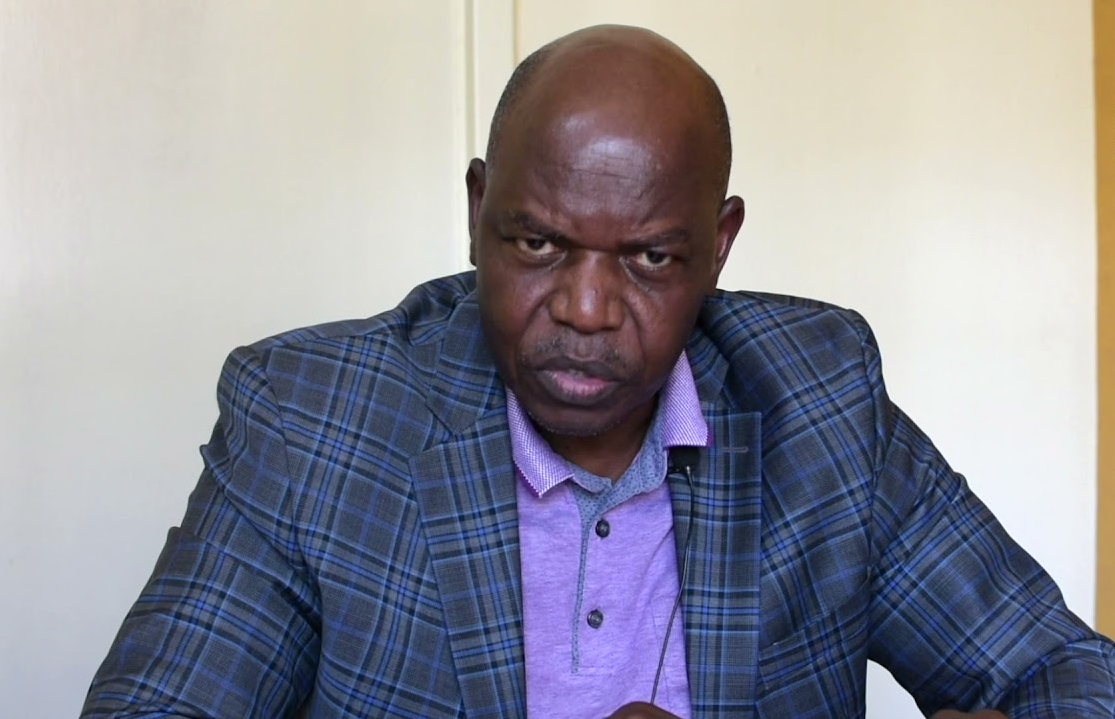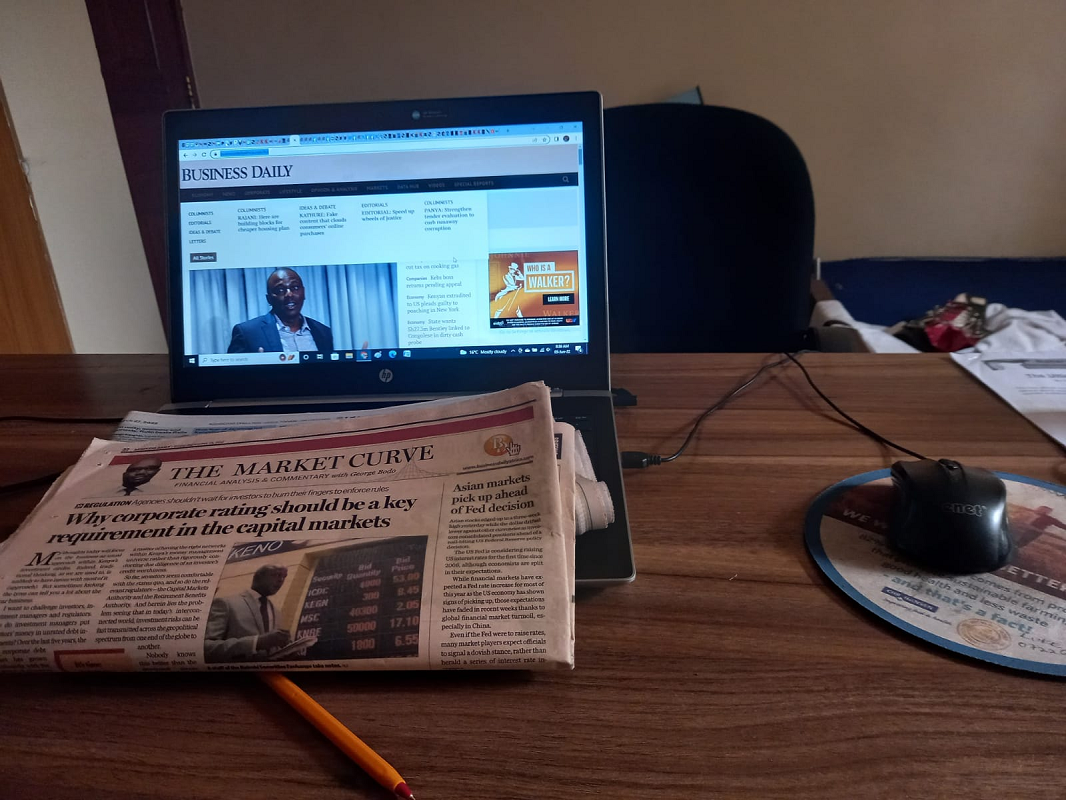LAUNCHING BD PART II
As the reality of Business Day newspaper of South Africa launching its Nairobi edition sank in at Nation Media Group, the implications stirred up different emotions, boiling into a battle of journalistic wit and management insight. The journalism side was led by Nick Wachira, who was now associate editor in charge of business reporting at NMG, while Cyrille Nabutola provided the management soundboard.
PART I >> How NMG Stole ‘Business Daily’ Idea From South Africans
This was sometime in September 2005. Business Day had signed a printing and distribution deal with NMG, but missed the starting date in August 2005. Meanwhile, management had been consulting on the issue and NMG’s board finally announced that the group would launch its own business publication. Editorial Director, Mr Wangethi Mwangi, was asked to explore the options.
At the subsequent editorial meeting, Wangethi, a soft-spoken but ruthless editor, began by acknowledging what had become a chilly topic at Nation Centre: the South Africans were going after NMG’s lunchbox. “These guys (Business Day) are coming,” he said at the meeting, to the surprise of some editors who were hearing the news for the first time and amusement to those who saw the positive side of a new entrant in the market such as job opportunities and competitive pay. “Can we counter them?”
Wangethi’s proposal, in the typical NMG’s red tape model, included hiring a consultant from London to study the question or expanding further into Uganda. Wangethi’s route of consultants the Nation way would have taken time – possibly years – to get to a decision.
All along, Mr Wachira was listening quietly and occasionally glancing at templates he already downloaded on his Macbook. Wachira, who was widely known by his first name among his peers, had immersed himself into the idea of a business newspaper to the point of obsession. He often kept a heap of foreign newspapers like The Wall Street Journal, Financial Times and magazines such as The Economist and Business Week at his desk on third floor of Nation Centre in what some of his colleagues saw as an intimidation gimmick.
No one is sure when he read them, if at all. “I already know about business newspapers,” Nick spoke up, all eyes on him. “And I know this market. Can I explore this?”
Wangethi raised his head up, signaling for a response. Most guys looked down and those who talked were indifferent taking the politically-correct middle ground of “it’s a good idea”. Few days later, Nick was moved off the Daily Nation business desk and given a new assignment to create a 32-page mock-up of a daily business newspaper in two months, with a full launch expected in six months. He was aware that he and the project were considered outsiders.
Much of the mood at Nation Centre, especially the editorial department on the third floor, was against the business newspaper. Some felt, justifiably so, it would eat into Daily Nation’s turf while others argued that no one would buy a newspaper that offers only business news, while a weekly would undercut The East African.

The belief was that most readers buy Nation first, and those who can afford add The Standard. That made Business Daily a luxury newspaper where most readers, according to their argument, would have to drop either The Standard (for BD) or sacrifice the Nation (cannibalizing the elder brother).
Other editors feared a full-fledged newspaper would disrupt staffing with some journalists being moved. This may have been selfish but made sense in a newsroom where editors developed their own reporters.
And so for many, it was a good idea whose time had not come. “The rank and file felt this could be a threat to Daily Nation,” Nick is quoted in the INSEAD Business School case study as saying. “It might be a better paper, cannibalize advertising and the readers. People are afraid of change and they didn’t know what kind of change this involved. I became a symbol of this – I was 29 years, promoted too fast.”
Read >> Meet the Nation Demons That Kìll And Plant Stories On Newspapers
That may have informed the decision by Wangethi Mwangi to withdraw Nick from the newsroom: there was too much pollution targeted at the idea and some sort of profiling of his personality. He wanted Nick and his team to think independently. Luckily, an executive offered Nick an office on the top floor of the Nation Centre where he worked with one designer. Nick told he INSEAD team the experience was “very lonely, but exciting”.
The project team reported directly to Wangethi. At the other end, Marketing Director Cyrille Nabutola was still not buying into this idea. He was against it from the outset. He thought the best strategy was to improve Daily Nation’s business content, raise circulation, attract more advertising and then consider a business standalone. Any other approach was merely “reacting” to the notion that “someone else is cutting our feet, taking a market we could get.”

Wangethi tended to agree with Nabutola, but was willing to test Wachira’s idea. As editorial director, though, his word carried a lot of weight. His retirement was also about two or so years away and Wangethi needed a legacy product as well.
The NMG began conducting regular surveys of readers and advertisers – a step that showed management’s strong interest in it. It became clear that while some readers wanted more business coverage, they didn’t imagine they could have a daily business paper.
“Yet, as we saw it, people hadn’t imagined they could have an iPod before Apple offered it to them, either. Given the shortage of quality business journalism in Kenya, there will definitely be demand,” Nick argued. The problem was that it could take five years before the market developed the “habit” of buying a daily business paper.
See >> Did You Know? Farmers Beat Journalists In Bedroom Matters
At the NMG half-year results meeting in September that year, Board chairman Hannington Awori revealed that the group would soon launch “new ventures and products” to complement its existing portfolio. After this announcement Wachira was told to start firming up the project.
Recruiting Business Reporters
The question everyone was asking is how the new newspaper will generate quality content to keep readers engaged and buying the newspaper every day. The next question was, how different Business Daily would be from the Nation.
The benchmark for business news was two or three pages in the dailies and 12-page weekly inserts in Daily Nation (Smart Company) and The Standard (Financial Standard). The new Business Daily would be 32 pages of which 40% would be advertising. That meant creating a week’s worth of news (20 pages) every single day.
Since business reporting in Kenya mainly involved covering events organized by companies or government, or running press releases from public relations firms, there were not enough to fill a daily, let alone a newspaper that anyone would want to buy.
‘If you don’t grow you’ll die’
Eventually, Mr Nabutola had forcibly been converted to a backer of the Business Daily. But he was not done poking holes in it. He warned Wachira, who often sounded religious about this project, warning that if circulation didn’t grow quickly, “you’ll not get advertisers.”
Wachira thought the answer was to hire enough reporters. There were only six on the Nation’s business desk – Muna Wahome, Geoffrey Irungu, Wachira Kang’aru, Washington Akumu (Sunday Business), Mwaniki Wahome, and Kaburu Mugambi. Copy editors were Peter Okong’o, Bernadette Murgor and Luke Mulunda. Poaching from this desk was unthinkable as the same team handled daily pages, Sunday, Smart Company and Money magazines.

Wachira raided Standard for three editors two copy editors and a reporter, but reckoned that 30 more journalists were needed. Among the top picks from Standard (which had Financial Standard on Tuesdays and a Sunday business section as well) were Business Editor Ochieng Rapuro, who later took over Business Daily from Wachira, and reporters led by Michael Omondi.
Tapping new talent
At least 11 Kenyan universities offered undergraduate or graduate journalism courses but none offered business journalism training. Wachira decided to recruit outside journalism schools and the industry.
“I went to every university and said, ‘We have this great programme and we’re looking for talented people. Join us.’ We got 13,000 resumes. We went through every one and coded them. We came to a shortlist of 100 people and then we got it down to 50 and interviewed each one of them.”
He expected that any graduate offered a job would take it. This is because a typical starting salary for a university graduate was Ksh15,000 per month at the time, while a new reporter’s salary at the Nation was Ksh55,000.
See >> Standard Group Stuck In Red Mud Despite Growth In Revenue
But Nabutola, an incurable pessimist on this project, often had his speech betray his feelings. “First of all, agree on the vision, then how you will support it. Don’t say ‘To do a good paper I need staff’, he commented. “It is climbing a tree from the top.” The HR department protested at the costs.
Nonetheless, Wachira, now enjoying goodwill of the editorial director Wangethi Mwangi and CEO Wilfred Kiboro, hired former BBC reporter and trainer Jenny Luesby to give a five-day crásh course to new comers to help each reporter set up coverage areas, identify issues and trends. By 2006, his team was ready for a dry run. Stories were assigned, written and edited: some were even published in the Nation.
The Business Of Business Daily
Wachira knew that the market for Business Daily “did not exist”. The strategy was to create an upscale paper, a Kenyan version of The Wall Street Journal or Financial Times. The cover price would be Ksh50, a “signal that we were premium product”, said Wachira. The Daily Nation sold for Ksh40. Business Daily’s current cover price is Ksh60, same as Daily Nation’s after adjustments over the years.
Based on government data, the Business Daily estimated that 46,000 Kenyans earned more than Ksh100,000 per month and could afford to buy a copy every day. The typical reader profile was over 30 years old and “may not be in the C-suite but getting there,” said Wachira. The first year circulation target was 3,000 copies per day. When others saw handful readers who won’t make sense to advertisers Wachira called it “a niche”.
To get this niche in the 30-40 years range Business Daily had to find, for example, a way of getting them to spare just Ksh50 buy a newspaper everyday rather than buy Ksh250 cup of cappuccino at the coffee house or a drink at the bar.

By year three, Wachira hoped circulation would be 12,500 and Business Daily would be profitable. Currently, Business Daily sells about 11,000 copies per day, an indication just how the business newspaper market has been a tricky affair even without the South African competitors.
Its advertising rates also presented a premium over the Nation. The Nation with a circulation of over 200,000 then sold full-page adverts for Ksh450,000. BD’s full-page rate was Ksh350,000 for a much smaller print run.
“We had to set a rate that was not significantly lower (than the Nation) so we would not cannibalize advertising revenue,” Wachira said. “We were more targeted. Advertisers buy a lot of excess circulation.”
In other words, they pay for readers who do not care about their products. The Business Daily was about to turn that around and offer value for advertiser, so Wachira imagined.
Coming Up In Part III – New CEO Linus Gitahi’s Plan To Kìll Business Daily And Launch Day Was a Flop
PART I >> How NMG Stole ‘Business Daily’ Idea From South Africans


![As of April 2021, Nation.Africa had crossed 50,000 paying subscribers according to NMG. [Photo/ Aga Khan University - The Innovation Centre]](https://businesstoday.co.ke/wp-content/uploads/2022/06/images-87-150x150.jpeg)










Leave a comment